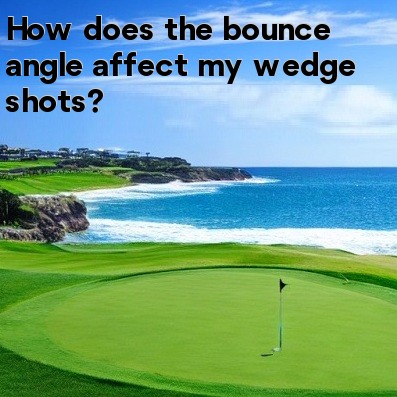
In golf, How does the bounce angle affect my wedge shots?
When it comes to wedge shots in golf, one of the key factors that can greatly affect the outcome is the bounce angle of the wedge. The bounce angle refers to the angle between the leading edge and the lowest point on the sole of the club.
Understanding how the bounce angle affects your wedge shots can help you make better club selections and improve your performance around the greens. Here are a few ways in which the bounce angle can impact your shots:
- Bunker Shots: The bounce angle is particularly crucial when playing shots from bunkers. A higher bounce angle can prevent the club from digging too deeply into the sand, allowing it to glide through the surface and underneath the ball. This helps to prevent the club from getting stuck or digging in, resulting in a clean contact and a successful escape from the bunker.
- Firm Lies: On firm lies, a lower bounce angle is more desirable. This reduces the risk of the club bouncing off the ground, ensuring better contact and increased control. With a lower bounce angle, the leading edge of the wedge gets closer to the turf, allowing for precise shots with greater accuracy.
- Divots: The bounce angle also plays a role in the type of divot that is created after hitting a wedge shot. A higher bounce angle tends to produce shallower divots, as the club glides more smoothly through the turf. Conversely, a lower bounce angle can lead to deeper divots, as the leading edge makes more of an impact on the ground.
- Sand Conditions: The bounce angle can be adjusted based on the type and condition of the sand in bunkers. Soft, fluffy sand usually requires a higher bounce angle to prevent the club from digging in too much. Firmer sand, on the other hand, may call for a lower bounce angle to ensure better control.
- Shot Preferences: Ultimately, the bounce angle also comes down to personal preference and playing style. Some golfers prefer a higher bounce angle for more forgiveness and ease of use, while others opt for a lower bounce angle for increased versatility and shot-making options.
To determine the ideal bounce angle for your wedge shots, it is recommended to consult with a professional club fitter or a knowledgeable golf instructor. They can assess your swing and playing style to provide personalized recommendations that match your skill level and course conditions.
In conclusion, the bounce angle of your wedge can significantly impact the outcome of your shots. By understanding how it affects different aspects of your game, such as bunker shots, divots, and shot preferences, you can make informed decisions when selecting and using your wedges. Finding the right balance of bounce angle for your game can enhance your ability to execute precise, controlled shots around the green.





